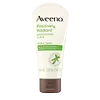What's inside
What's inside
 Key Ingredients
Key Ingredients

No key ingredients
 Benefits
Benefits

 Concerns
Concerns

 Ingredients Side-by-side
Ingredients Side-by-side

Water
Skin ConditioningCocamidopropyl Betaine
CleansingGlycerin
HumectantSodium Methyl Cocoyl Taurate
CleansingDecyl Glucoside
CleansingCellulose
AbsorbentSodium Chloride
MaskingAcrylates/C10-30 Alkyl Acrylate Crosspolymer
Emulsion StabilisingPhenoxyethanol
PreservativeCaprylyl Glycol
EmollientPEG-80 Sorbitan Laurate
Sodium Hydroxide
BufferingParfum
Masking1,2-Hexanediol
Skin ConditioningButylene Glycol
HumectantPEG-16 Soy Sterol
EmulsifyingTropolone
Skin ConditioningGlycine Soja Protein
EmulsifyingWater, Cocamidopropyl Betaine, Glycerin, Sodium Methyl Cocoyl Taurate, Decyl Glucoside, Cellulose, Sodium Chloride, Acrylates/C10-30 Alkyl Acrylate Crosspolymer, Phenoxyethanol, Caprylyl Glycol, PEG-80 Sorbitan Laurate, Sodium Hydroxide, Parfum, 1,2-Hexanediol, Butylene Glycol, PEG-16 Soy Sterol, Tropolone, Glycine Soja Protein
Water
Skin ConditioningGlycerin
HumectantSodium Laurylglucosides Hydroxypropylsulfonate
CleansingCellulose
AbsorbentSodium Chloride
MaskingDiglycerin
HumectantCocamidopropyl Hydroxysultaine
CleansingSodium Cocoyl Glycinate
CleansingSodium Lauroamphoacetate
CleansingXanthan Gum
EmulsifyingMicrocitrus Australasica Fruit Extract
Biosaccharide Gum-4
Skin ConditioningPanthenyl Triacetate
Parfum
MaskingHydroxypropylcellulose
EmulsifyingAcrylates/C10-30 Alkyl Acrylate Crosspolymer
Emulsion StabilisingDecyl Glucoside
CleansingSorbeth-230 Tetraoleate
EmulsifyingSorbitan Laurate
EmulsifyingGellan Gum
Lauric Acid
CleansingHydroxyacetophenone
AntioxidantCitric Acid
BufferingWater, Glycerin, Sodium Laurylglucosides Hydroxypropylsulfonate, Cellulose, Sodium Chloride, Diglycerin, Cocamidopropyl Hydroxysultaine, Sodium Cocoyl Glycinate, Sodium Lauroamphoacetate, Xanthan Gum, Microcitrus Australasica Fruit Extract, Biosaccharide Gum-4, Panthenyl Triacetate, Parfum, Hydroxypropylcellulose, Acrylates/C10-30 Alkyl Acrylate Crosspolymer, Decyl Glucoside, Sorbeth-230 Tetraoleate, Sorbitan Laurate, Gellan Gum, Lauric Acid, Hydroxyacetophenone, Citric Acid
Ingredients Explained
These ingredients are found in both products.
Ingredients higher up in an ingredient list are typically present in a larger amount.
Acrylates/C10-30 Alkyl Acrylate Crosspolymer is a synthetic polymer. It is used to thicken and improve the texture of products. Due to its properties, it can prevent water and oil ingredients from separating.
Cellulose is the main component of plant cell walls. It is used as an emulsifier, absorbent, and texture enhancer.
This ingredient has many functions:
Fun fact: Cellulose is the most abundant form of organic polymer on Earth.
Learn more about CelluloseDecyl Glucoside is a glucose-based surfactant and emulsion stabilizer. It is created by reacting glucose with the fatty acids from plants.
Surfactants help clean the skin by trapping oil, sebum, and dirt to be washed away. As an emulsion stabilizer, it stabilizes the ingredients in a product by preventing them from separating.
This ingredient is biodegradable and non-toxic. This ingredient is commonly found in baby shampoos.
Decyl Glucoside is sometimes used to stabilize the UV filter Tinosorb.
Learn more about Decyl GlucosideGlycerin is already naturally found in your skin. It helps moisturize and protect your skin.
A study from 2016 found glycerin to be more effective as a humectant than AHAs and hyaluronic acid.
As a humectant, it helps the skin stay hydrated by pulling moisture to your skin. The low molecular weight of glycerin allows it to pull moisture into the deeper layers of your skin.
Hydrated skin improves your skin barrier; Your skin barrier helps protect against irritants and bacteria.
Glycerin has also been found to have antimicrobial and antiviral properties. Due to these properties, glycerin is often used in wound and burn treatments.
In cosmetics, glycerin is usually derived from plants such as soybean or palm. However, it can also be sourced from animals, such as tallow or animal fat.
This ingredient is organic, colorless, odorless, and non-toxic.
Glycerin is the name for this ingredient in American English. British English uses Glycerol/Glycerine.
Learn more about GlycerinParfum is a catch-all term for an ingredient or more that is used to give a scent to products.
Also called "fragrance", this ingredient can be a blend of hundreds of chemicals or plant oils. This means every product with "fragrance" or "parfum" in the ingredients list is a different mixture.
For instance, Habanolide is a proprietary trade name for a specific aroma chemical. When used as a fragrance ingredient in cosmetics, most aroma chemicals fall under the broad labeling category of “FRAGRANCE” or “PARFUM” according to EU and US regulations.
The term 'parfum' or 'fragrance' is not regulated in many countries. In many cases, it is up to the brand to define this term.
For instance, many brands choose to label themselves as "fragrance-free" because they are not using synthetic fragrances. However, their products may still contain ingredients such as essential oils that are considered a fragrance by INCI standards.
One example is Calendula flower extract. Calendula is an essential oil that still imparts a scent or 'fragrance'.
Depending on the blend, the ingredients in the mixture can cause allergies and sensitivities on the skin. Some ingredients that are known EU allergens include linalool and citronellol.
Parfum can also be used to mask or cover an unpleasant scent.
The bottom line is: not all fragrances/parfum/ingredients are created equally. If you are worried about fragrances, we recommend taking a closer look at an ingredient. And of course, we always recommend speaking with a professional.
Learn more about ParfumChances are, you eat sodium chloride every day. Sodium Chloride is also known as table salt.
This ingredient has many purposes in skincare: thickener, emulsifier, and exfoliator.
You'll most likely find this ingredient in cleansers where it is used to create a gel-like texture. As an emulsifier, it also prevents ingredients from separating.
There is much debate on whether this ingredient is comedogenic. The short answer - comedogenic ratings don't tell the whole story. Learn more about comegodenic ratings here.
The concensus about this ingredient causing acne seems to be divided. Research is needed to understand if this ingredient does cause acne.
Scrubs may use salt as the primary exfoliating ingredient.
Learn more about Sodium ChlorideWater. It's the most common cosmetic ingredient of all. You'll usually see it at the top of ingredient lists, meaning that it makes up the largest part of the product.
So why is it so popular? Water most often acts as a solvent - this means that it helps dissolve other ingredients into the formulation.
You'll also recognize water as that liquid we all need to stay alive. If you see this, drink a glass of water. Stay hydrated!
Learn more about Water